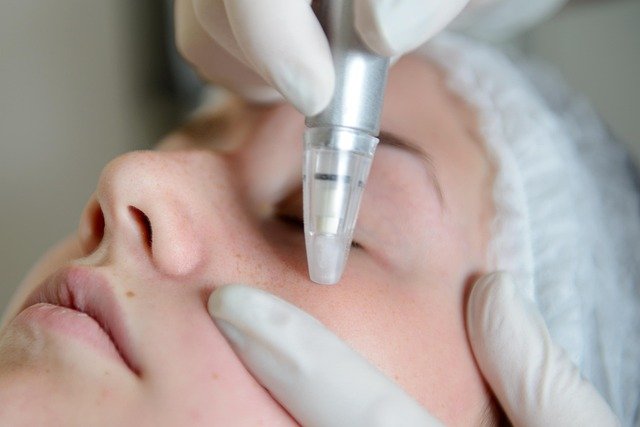Microneedling: Revitalizing Skin Through Controlled Injury
Microneedling, a minimally invasive cosmetic procedure, has gained significant traction in recent years as a versatile solution for various skin concerns. This technique, also known as collagen induction therapy, involves creating tiny punctures in the skin's surface using fine needles. The controlled injury stimulates the body's natural healing process, promoting collagen and elastin production. As a result, microneedling has become a popular choice for addressing issues such as fine lines, wrinkles, acne scars, and uneven skin texture. Its ability to enhance skin quality without the use of harsh chemicals or invasive surgical techniques has made it an attractive option for those seeking effective skincare solutions with minimal downtime.

How Microneedling Works
The principle behind microneedling is relatively straightforward. As the needles penetrate the skin, they create microscopic channels that trigger the body’s wound healing response. This process stimulates the production of growth factors, which in turn promote the formation of new collagen and elastin fibers. The depth of needle penetration can be adjusted based on the specific skin concern being addressed and the area of the body being treated.
Benefits Beyond Collagen Production
While collagen induction is the primary mechanism of action, microneedling offers several additional benefits. The micro-channels created during the procedure can enhance the absorption of topical skincare products, allowing active ingredients to penetrate deeper into the skin. This increased product efficacy can lead to improved overall skin health and appearance. Furthermore, microneedling has been shown to stimulate hair growth when used on the scalp, making it a potential treatment option for certain types of hair loss.
Versatility in Treating Skin Concerns
One of the key advantages of microneedling is its versatility in addressing a wide range of skin issues. It has shown efficacy in improving the appearance of acne scars, surgical scars, and stretch marks. The procedure can also help reduce the visibility of enlarged pores and hyperpigmentation. For those concerned with signs of aging, microneedling can soften fine lines and wrinkles, leading to a more youthful complexion. This versatility makes it an attractive option for individuals looking to address multiple skin concerns simultaneously.
Combining Microneedling with Other Treatments
The effectiveness of microneedling can be further enhanced when combined with other skincare treatments. For example, platelet-rich plasma (PRP) therapy, which involves applying a concentration of the patient’s own platelets to the skin, can be used in conjunction with microneedling to accelerate healing and boost collagen production. Similarly, the application of specific serums or growth factors immediately following the procedure can maximize results. These combination approaches allow for customized treatment plans tailored to individual skin needs and goals.
Advancements in Microneedling Technology
As the popularity of microneedling has grown, so too has the technology behind it. Modern devices now incorporate features such as radiofrequency energy or LED light therapy, which can provide additional benefits beyond traditional microneedling alone. Radiofrequency microneedling, for instance, delivers thermal energy to deeper layers of the skin, potentially enhancing collagen remodeling and skin tightening effects. These technological advancements have expanded the range of treatable conditions and improved overall treatment outcomes.
Safety Considerations and Potential Side Effects
While microneedling is generally considered safe when performed by a trained professional, it is not without risks. Common side effects include temporary redness, swelling, and mild discomfort in the treated area. In rare cases, more serious complications such as infection or scarring can occur. It’s crucial for individuals considering microneedling to consult with a qualified practitioner and disclose any relevant medical history or skin conditions that may affect their suitability for the treatment.
The Role of At-Home Microneedling Devices
The rise of microneedling has also led to the development of at-home devices designed for personal use. These typically feature shorter needles and are intended for more superficial treatments. While they can provide some benefits, particularly in terms of product absorption, they are generally less effective than professional treatments. Additionally, improper use of at-home devices can lead to skin damage or infection. Consumers should approach these products with caution and ideally seek guidance from a skincare professional before incorporating them into their routine.
Future Directions in Microneedling Research
As microneedling continues to evolve, researchers are exploring new applications and refining existing techniques. Current areas of investigation include the use of microneedling to deliver drugs transdermally, potentially improving the treatment of various skin conditions. Additionally, studies are underway to optimize needle depth, treatment frequency, and combination protocols to maximize efficacy while minimizing side effects. The ongoing research in this field promises to further expand the potential of microneedling in both medical and cosmetic dermatology.
In conclusion, microneedling has emerged as a powerful tool in the skincare arsenal, offering a minimally invasive approach to addressing a wide range of skin concerns. Its ability to stimulate natural collagen production, enhance product absorption, and improve overall skin quality has made it a popular choice among both practitioners and patients. As technology advances and research progresses, microneedling is likely to play an increasingly important role in the future of skincare and aesthetic medicine.




